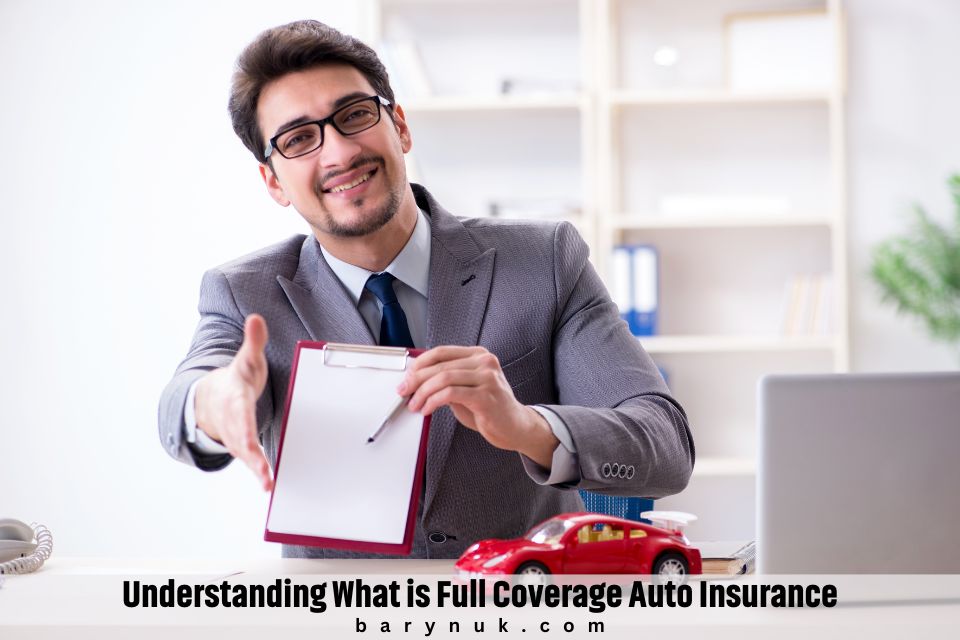Buying auto insurance can be confusing with all the different types of coverage available. One term you may hear is “full coverage” auto insurance. But what exactly does full coverage mean and is it something you need? This article will explain what full coverage insurance is, what it typically includes, who needs it, and things to consider when deciding if it’s right for your situation.
Table of contents
What is Full Coverage Car Insurance?

Full coverage auto insurance refers to a policy that combines multiple types of coverage to provide comprehensive protection for your vehicle. There is no single definition as to what specifically constitutes full coverage. But typically, a full coverage policy includes liability coverage, comprehensive coverage, collision coverage, uninsured/underinsured motorist coverage, and any other coverage required in your state.
Liability coverage pays for damage you cause to others, collision coverage pays for damage to your car from a crash, comprehensive coverage pays for damage to your car not caused by a crash, and uninsured/underinsured motorist coverage protects you if you’re hit by a driver with little or no insurance.
So in essence, full coverage insurance provides financial protection for both damage you cause to others and damage to your own vehicle through nearly all standard coverage types.
Who Needs Full Coverage Car Insurance?

Full coverage auto insurance is typically recommended:
If you have a car loan – Nearly all lenders require you carry comprehensive and collision coverage to protect their investment in your vehicle.
In the event that you a new or expensive car – Comprehensive and collision coverage protect against damage and loss so are wise to have on a valuable vehicle.
If you can’t easily afford major repairs or to replace your car if it’s totaled. The coverage will pay for most repairs or replacement costs.
If you want complete peace of mind. The additional coverage types fill gaps left by basic liability coverage.
On flip side, full coverage may not make financial sense if you own an older car worth only a few thousand dollars. The coverage itself could cost more in premiums than your car’s book value.
What Does Full Coverage Insurance Include?
Full coverage insurance includes some combination of the following core auto insurance coverage types:
Liability Coverage

Bodily Injury Liability – covers injuries to others
Property Damage Liability – covers damage to others’ property
Collision – covers damage to your vehicle from a collision with an object like another car or guardrail
Comprehensive – covers damage to your car not caused by a collision, like theft, vandalism, hail, fire, or hitting an animal
Uninsured/Underinsured Motorist – covers injuries to you and your passengers if hit by a driver with little or no insurance
Medical Payments (MedPay) – covers minor injuries to you and your passengers regardless of who caused the accident
Rental Reimbursement – pays for a rental car while yours is in the shop after a covered loss
Roadside Assistance – pays for towing and labor if your car breaks down
Depending on where you live, state law may mandate you carry certain coverages like liability insurance. Be sure to check your state’s minimum insurance requirements.
Should I Get Full Coverage Auto Insurance?

Whether full coverage makes sense depends largely on your car’s value and ability to cover repairs/replacement if it’s damaged. Ask yourself these questions:
How much is my car worth? If it’s only worth $2,000 for example, collision and comprehensive coverage could cost more in premiums than replacement value. Liability coverage may make more financial sense.
Can I afford to repair or replace my car if damaged? If you can easily cover major repairs or buy a comparable vehicle, you may comfortably go with basic liability coverage.
Do I owe money on my car? Nearly all auto loans require you carry collision and comprehensive coverage. Read your loan terms.
In general, older cars with low values are fine with liability coverage. But newer cars and vehicles you still owe on call for full coverage protection. Speak with an insurance agent to review options for your situation.
Conclusion
Full coverage auto insurance provides financial protection for your vehicle through multiple types of coverage rather than just state minimum liability coverage. Typical full coverage policies bundle:
Liability insurance
Collision
Comprehensive
Uninsured/Underinsured Motorist Coverage
Other optional coverages
Drivers with new or expensive vehicles, loans/leases on their cars, or those wanting complete peace of mind usually opt for full coverage. Compare policy rates and talk to an insurance agent to decide if detailed protection is right for you.


